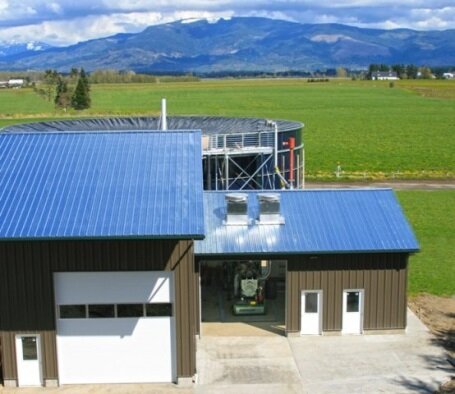Biogas plant features high-yield digester, efficient CHP engine, and gas treatment system.
CHP plant produces electricity and thermal energy for local grid and farm
Facts & figures

The customer, a Dairy Farm about 90 miles north of Seattle, WA owns and operates a Biogas Plant with a high yield anaerobic digester made by DARITECH. The combined heat and power plant uses the 2G agenitor 212, a thermodynamically optimized 400 kw biogas engine with MAN core, coupled with the patented 2G drives technology, especially developed for high efficiency CHP operations. The biogas is treated with a 2G Gas Treatment system. The biogas dehumidification system is designed for highly efficient gas drying including re-heating. H2S is removed from raw biogas with 2G's carbon based filtration system. The CHP plant is producing energy for more than 400 homes in Washington, with close to 4,000 MW of thermal energy and 3,320 MW/h of electricity per year, feeding the entire electrical production into the PSE grid.
The dairy farm improves its energy efficiency, cuts down on greenhouse gas emissions, and keeps manure out of the waste stream. Residues are utilized as fertilizer and bedding. This project demonstrates the challenge in planning for capital equipment investment in an industry characterized by challenging and creative funding options. It illustrates the conflicts involving the risk of applying outdated technology from existing product lines used previously (e.g. gas gensets and homemade biogas CHP's, traditionally offered and sold in the U.S. in the past), versus the opportunity to select the most advanced and reliable technology.